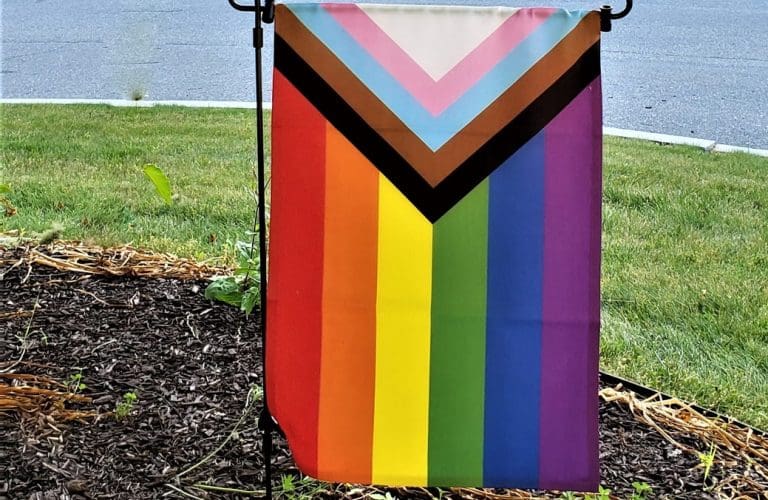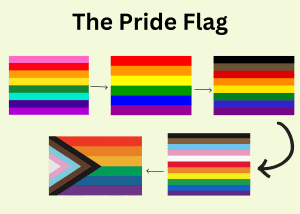The Pride Flag(s) and its Meaning – hope comes in many colors

The symbol most associated with the LGBTQ+ community is the rainbow. Recognized as a symbol of hope throughout history, the rainbow was a perfect symbol to represent the LGBTQ+ community, all they had fought for and all they continue to fight for.
The first flag was created in 1978 and consisted of the colors: pink, red, orange, yellow, green, turquoise, blue and violet. About a year after the original flag was created, when it came time to mass produce, the pink and turquoise colors were removed because it was too difficult to source the fabric colors.
The next generation of the Pride Flag, still a symbol of hope, came in 2017 with the Philadelphia Pride Flag. This version featured a black and brown stripes on top of the rainbow to symbolize people of color. The next Pride flag was developed in 2018, which featured the original rainbow, black and brown stripes as well as pink, blue and white stripes in recognition of the following communities: trans, gender non-binary, intersex and those across the gender spectrum.
With so many colors being added, there was concern that the meanings would start to get lost. To help this the black and brown strip as well as the pink, blue and white stripes were placed in the shape of an arrow and to the left in what is now the Progress Pride flag. This placement pattern brings discriminated minorities of the LGBTQ+ community to the forefront while ensuring the original symbols and message of hope are still prominent.
Check out our infographic to look at the evolution of the Pride flag over the years.

Meaning of each color in the Pride flag:
Pink: sexuality (no longer part of the Pride flag)
Red: Life
Orange: Healing
Yellow: Sunlight
Green: Prosperity and growth – fun fact: in the original Pride flag the color Green represented nature
Turquoise: Magic and Art (no longer part of the Pride flag)
Blue: serenity
Violet: Spirit
Black & Brown: People of Color
Pink, Blue & White: Trans community
Over the years many versions of the Pride flag have been developed in support of the growing number of communities within the LGBTQ+ community. The most common flag associated with Pride remains the rainbow flag. If you choose to fly a Pride flag at your home or place of business you are letting people of the LGBTQ+ community know it is a safe space for them to feel welcomed and accepted for who they are.
At Northbridge we encourage each of our communities to fly the Progress Pride flag as a symbol to associates, residents and family members that all are welcome in our communities.
For tips on talking to your loved ones about the LGBTQ+ community check out our blog: 6 Tips for an informative and positive LGBTQ+ Talk with your Family.
Click here to watch our Pride Presentation- Love is Love.
Want to learn more about our Northbridge 4 All Committee? Click here to view our most recent newsletter.
—
If you’re considering senior living for yourself or a family member, we hope you’ll visit one of our communities. You’ll find a maintenance-free, activity-filled and engaging lifestyle to help support your wellness goals.
You’ll also discover many benefits in a Northbridge Senior Living community, including our Signature Program S.T.A.R. Club (Sharp Thinking, Active Residents) – which offers our residents several activities to participate in with others, including:
- Daily exercise group
- Walking club
- Tai Chi & yoga
- Nutritional classes
- Library and book club
- Museum outings
- Artists in residence program
- Multi-generational music
- Genealogy Generations
If you are considering senior living as the right choice for yourself or a loved one, we invite you to Find a Northbridge Community near you to learn more.
Sources:
VeryWellMind.com
Parade.com
